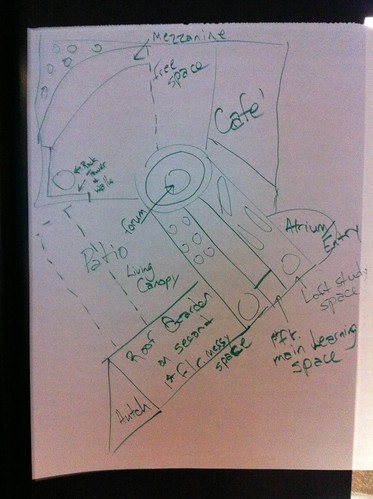If a job is worth doing, it’s worth doing well.
– Proverb
In advisory Monday, we talked about public displays of affection. A couple of days of the week, it’s Spring in Philadelphia, our students appear to have taken note of it.
In an effort to avert any of our 19 ninth grade advisees hanging all over one another in the hall the way so many others have been in the last few weeks, my co-advisor and I decided to meet the issue head on.
We spent a solid portion of advisory discussing how you treat and touch the people you’re attracted to as well as how you set boundaries for touching with the people who are attracted to you.
For good measure, we also talked about how to handle situations where your friends were the ones being hung on and clearly wish they weren’t.
Oh, and I talked about hickies.
In a move that had me feeling all of my 8 years of classroom experience, I brought up hickies and had an open and frank conversation about what it said about a person to want to put their mark (of ownership) on someone else and what it said about a person to let someone else mark them.
“I’ve never thought about it like that,” said one advisee who’d been eyeing me suspiciously as I made my case.
Tonight, I received an e-mail with a link to this story from the Daily News with the comment, “Fodder for advisory, or would it be too much?”
The e-mail was passed along by one of our advisory parents.
We hadn’t e-mailed the parents our lessons or anything, this mom had simply had a conversation about her student’s school day and noted the story when it crossed her path. She was being active and supportive.
In another moment of active support today, a fellow teacher engaged me in a conversation about what I would be studying at Harvard. As conversations do, this one found tangents in teachers unions, sustainability, teacher leadership and what we want for kids. After a day of teaching and a faculty meeting, this colleague invested his time in trying to know me better and to exchange ideas.
The faculty meeting our conversation followed had focused on two main issues. The second issue was the writing of narrative report cards – something I spent the better part of my afternoon crafting. Twice each school year, we get to sit with our students’ work and write thoughtfully about their progress, challenges and successes. I waded through a quarter’s worth of quantitative data to make certain I was saying things that showed each student I’d been paying attention throughout our time together and urged them to continue growing in the final quarter of the year.
Earlier in the meeting, the faculty had been urged to continue to be the amazing school we are in the face of tremendous, district-wide budget cuts. In a time where Chris could just have easily encouraged us to fall to our knees and begin wailing to the heavens, his message was that we should do all we can to continue to serve our students.
The students were not the only focus of the day.
Parents were rallied tonight in an emergency meeting of the Home and School Association to alert them to the budget crisis and begin to move them to raise the money we’ll need next year for supplies and programs while also asking them to contact state officials to let them know our school has a voice.
While the meeting was attended by those you’d expect , it was also attended by students. Not just students who were tagging along with their parents, mind you. We had students speaking out on what they wanted to do to help the school, students helping to set up for the meeting and students in the audience asking pointed questions and offering suggestions for fundraising.
They were engaging the agency they’ve known in our care to solve the problem of sustaining our community.
It was this agency I was reminded of when I continued to scroll through my e-mail on my walk home tonight. Aside from the advisory parent’s e-mail, I had a message from a student turning in homework, a message letting me know a student finished reading a book of choice and wanted to know if she should write a review, a message from a student saying she’d have class during a scheduled meeting but would e-mail me if she had any questions.
I work in a place of invested individuals who teach and learn on their worst days and lead, create, inspire and question on their best.
Everyone should have such a place.
